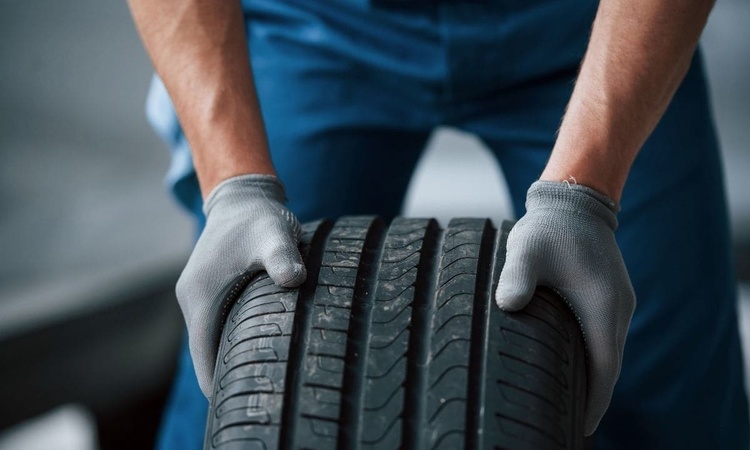Tire Selection and Rotation Strategies for Uneven Wear Patterns
Uneven tire wear is a common issue that affects handling, fuel efficiency, and long-term costs. This article examines practical tire selection and rotation strategies to address asymmetric or irregular wear patterns, helping drivers and fleet managers make informed, safety-focused maintenance decisions.

Uneven wear on tires can develop from alignment issues, suspension faults, driving habits, or mismatched tire types. Early recognition and a methodical approach to selection and rotation can prolong tire life, preserve vehicle efficiency, and support resale value. This article outlines targeted maintenance steps, rotation patterns, inspection practices, and considerations that balance safety and sustainability for passenger cars and fleet vehicles worldwide.
How does maintenance influence uneven tire wear?
Regular maintenance is the foundation for preventing and correcting uneven wear. Routine checks should include alignment, suspension components, and tire pressure, as incorrect inflation multiplies wear rates. Brake issues or sticking calipers can create localized wear; integrating brake inspections with tire checks helps catch these causes. Modern vehicles often report diagnostics or connectivity alerts via onboard software, so monitoring diagnostic codes and connectivity messages can surface issues early. For electric vehicles, battery weight and charging habits can slightly alter load distribution—consider these factors when diagnosing persistent wear.
Can rotation improve efficiency and extend tire life?
Planned rotation schedules redistribute wear and improve rolling efficiency. Most manufacturers recommend rotation every 6,000–8,000 miles, but patterns should be tailored to the vehicle’s drivetrain and observed wear. Front-wheel drive vehicles typically require different rotation sequences than rear- or all-wheel drive. Rotation can also improve fuel economy by ensuring even tread depth across axles, which maintains predictable rolling resistance. For fleets, standardizing rotation intervals within maintenance software helps maintain consistency and reduces downtime while supporting long-term cost control and resale preparedness.
Which tire choices help with uneven wear patterns?
Selecting tires that match the vehicle’s load, wheel size, and intended use reduces the chance of uneven wear. Tires with reinforced sidewalls or even tread compounds may perform better under heavy loads, including fleet duties or EV battery weight. If replacing a single tire, match brand, model, and tread pattern to the remaining tires when possible; mismatched tires accelerate irregular wear and can affect handling. Consider tire specifications—load index, speed rating, and construction—alongside expected driving conditions like frequent navigation through urban stop-and-go traffic or highway cruising.
How often should inspection detect early wear?
Regular visual inspections are crucial. A monthly quick check combined with a detailed inspection during oil changes or service visits can catch cupping, feathering, or inner-edge wear before they become severe. Use a tread depth gauge and compare measurements across positions. Inspections should include wheel alignment readings and a look at suspension bushings, tie rods, and shocks. For vehicles equipped with diagnostics and connectivity, analyze software-reported fault codes and tire-pressure monitoring system alerts; these digital signals often precede noticeable wear patterns.
What role do safety systems play in wear mitigation?
Safety systems intersect with tire wear in several ways. Anti-lock braking systems and electronic stability control depend on consistent tire contact and tread depth for predictable performance; uneven wear can degrade these systems’ effectiveness. Regular brake inspections help eliminate wear caused by stuck calipers or uneven braking forces. Proper tire selection and balanced rotation patterns preserve traction and reduce the risk of unsafe handling, especially in wet or variable conditions. For fleets, incorporating tire condition into safety audits supports compliance and reduces liability.
How can sustainability affect rotation and replacement?
Sustainability considerations include maximizing usable tire life through proactive maintenance, selecting longer-wearing compounds when appropriate, and recycling or retreading where regulations and safety allow. Thoughtful rotation strategies postpone premature replacement and reduce waste. Resale value also benefits when tires wear evenly, as prospective buyers or fleet purchasers evaluate remaining tread and alignment history. While retreading is viable for some commercial applications, passenger-vehicle owners should follow manufacturer guidance to balance safety and environmental concerns.
Uneven tire wear is a multifactor problem that responds best to a combined strategy: correct tire selection, consistent rotation, proactive inspections, and integration of vehicle diagnostics and safety checks. By aligning maintenance routines with observed wear patterns and vehicle-specific demands—whether a single car or a mixed fleet—operators can maintain efficiency, safety, and resale readiness while reducing unnecessary replacements.





